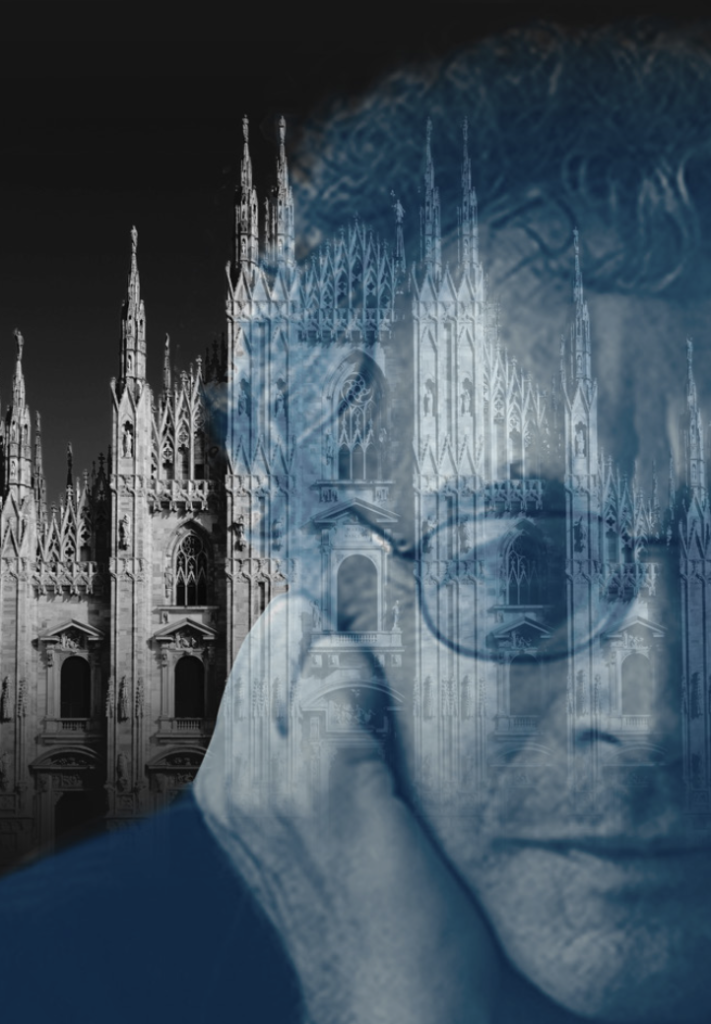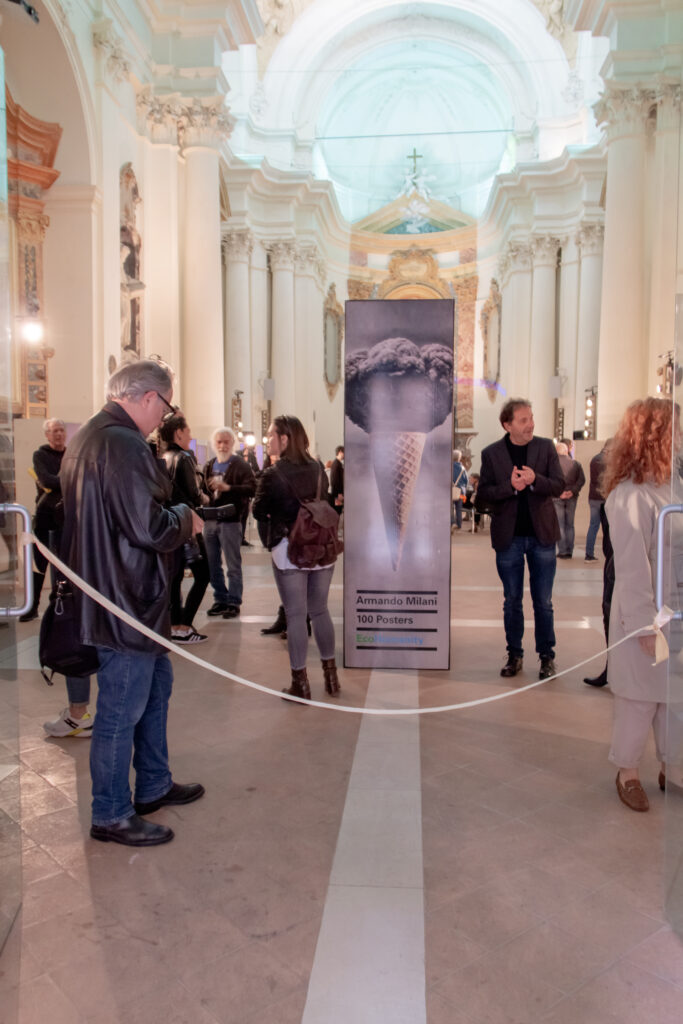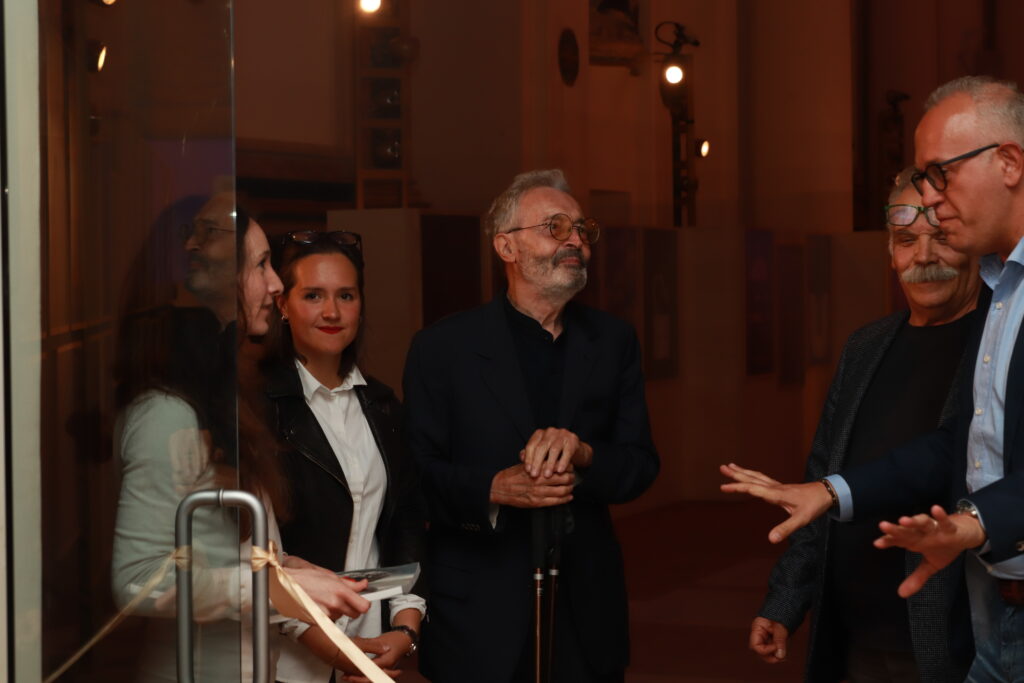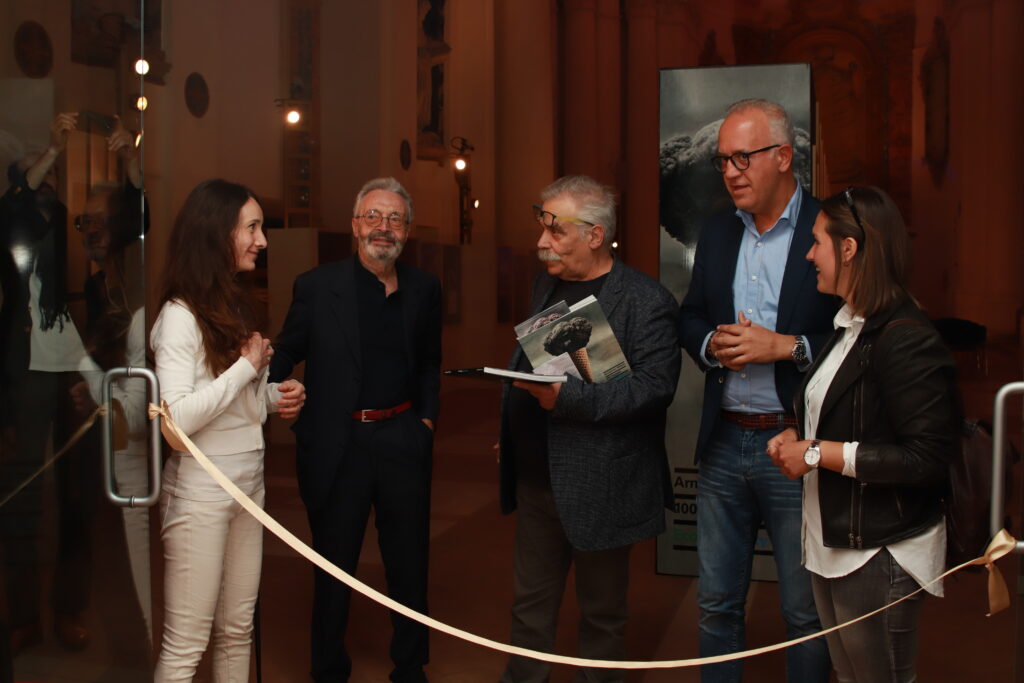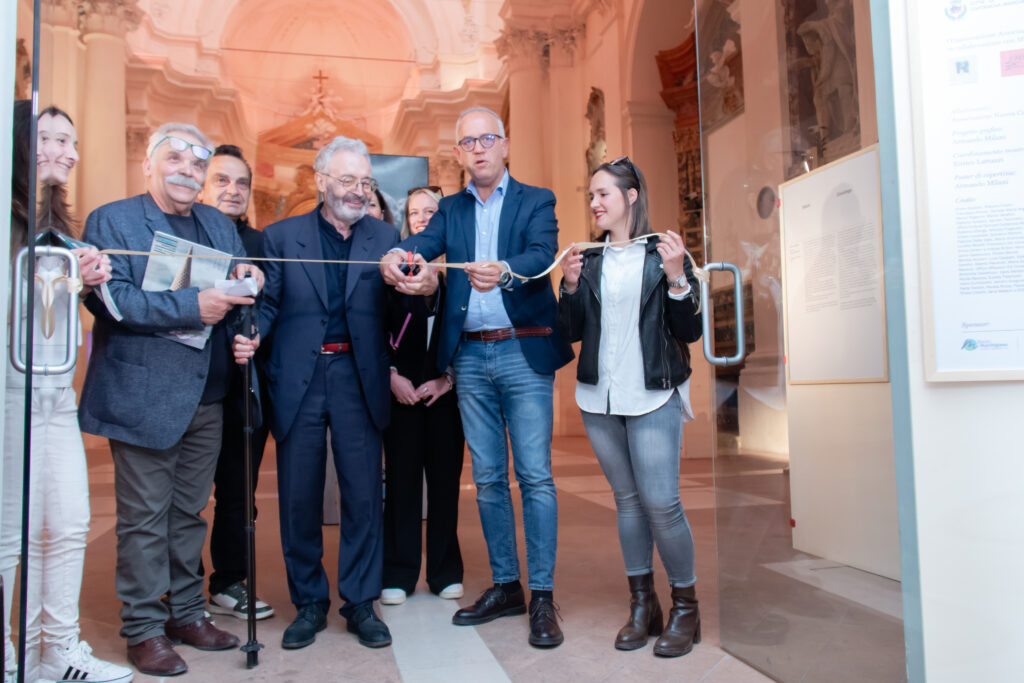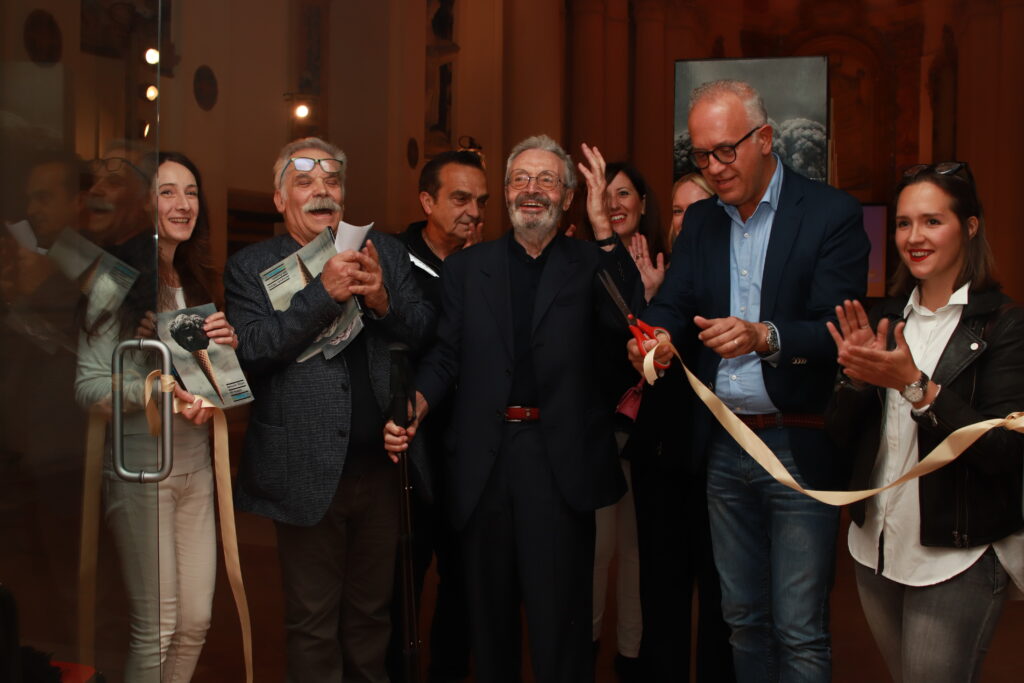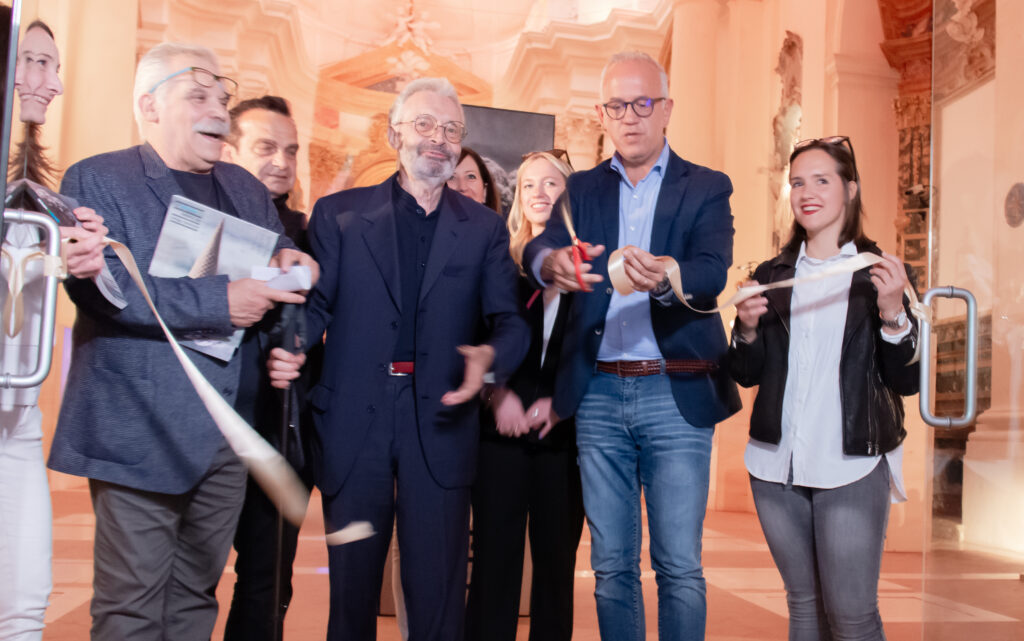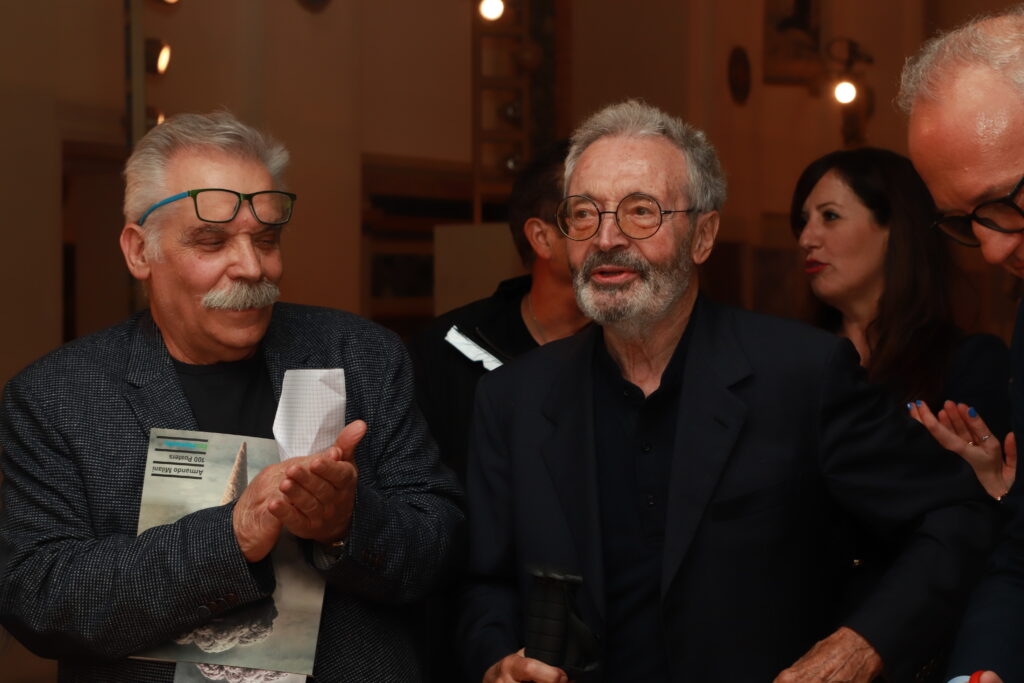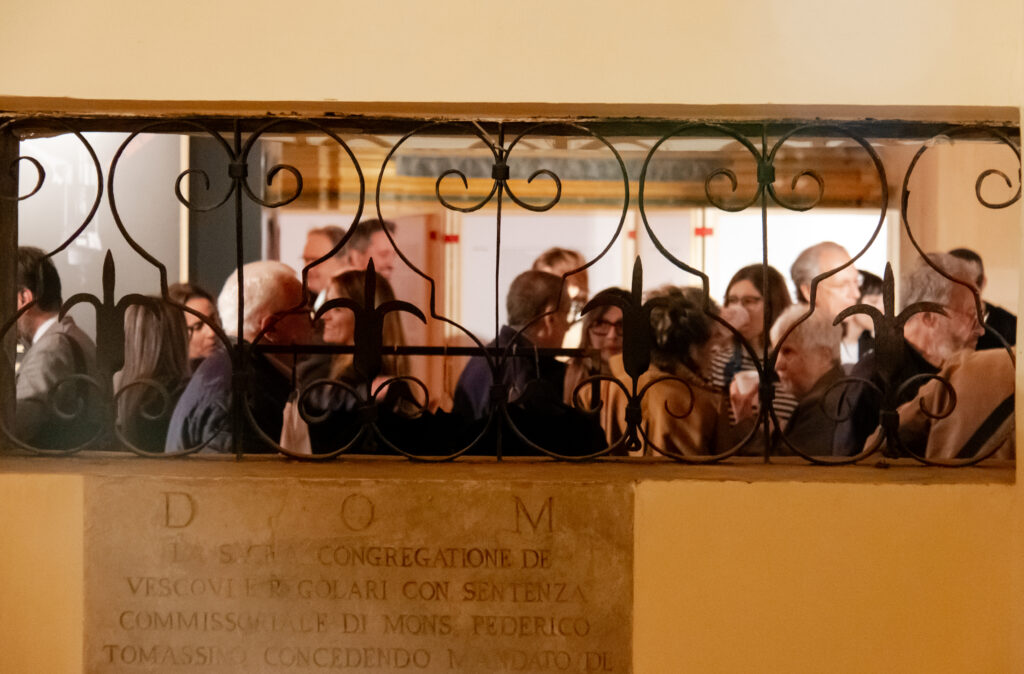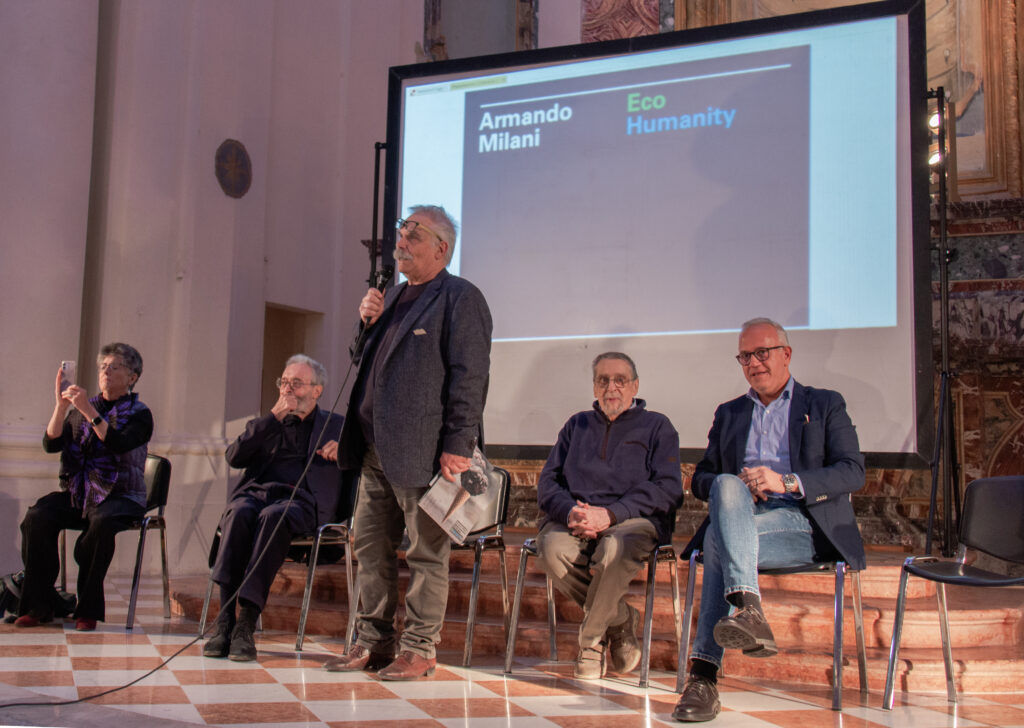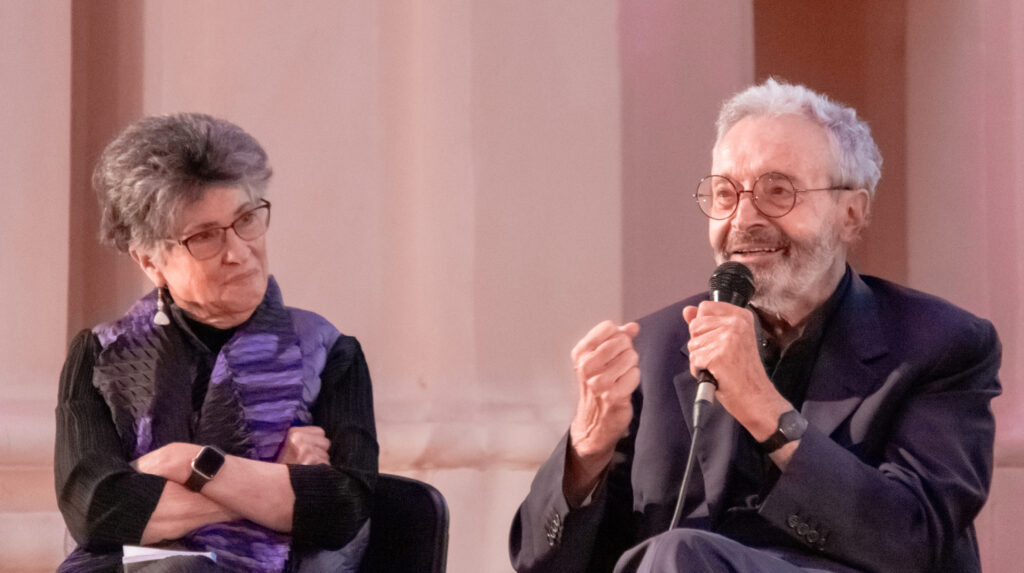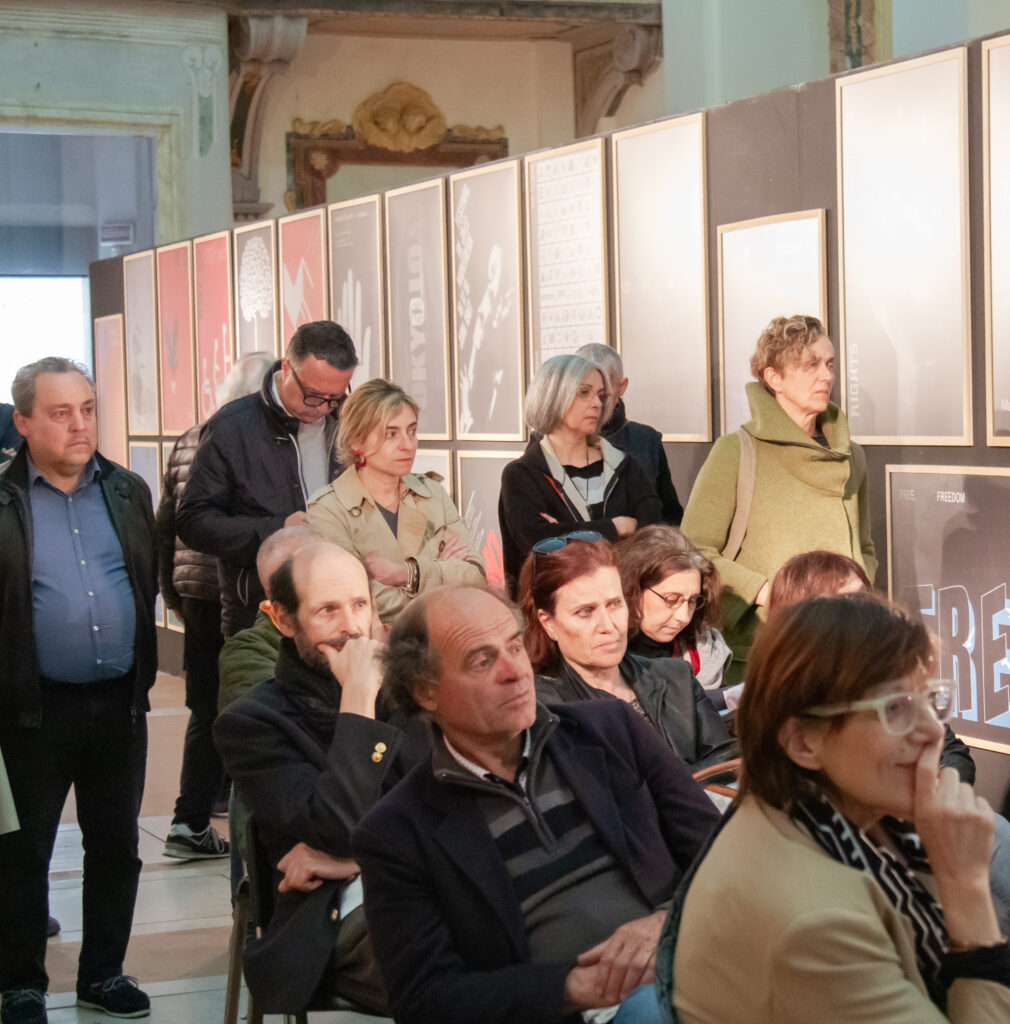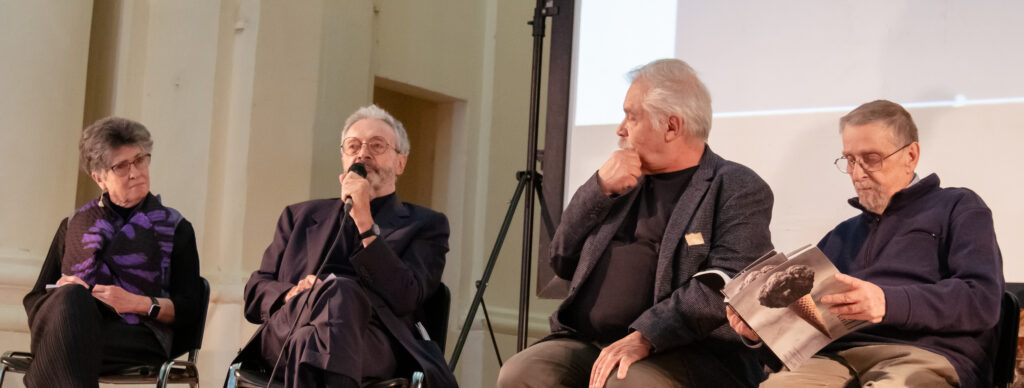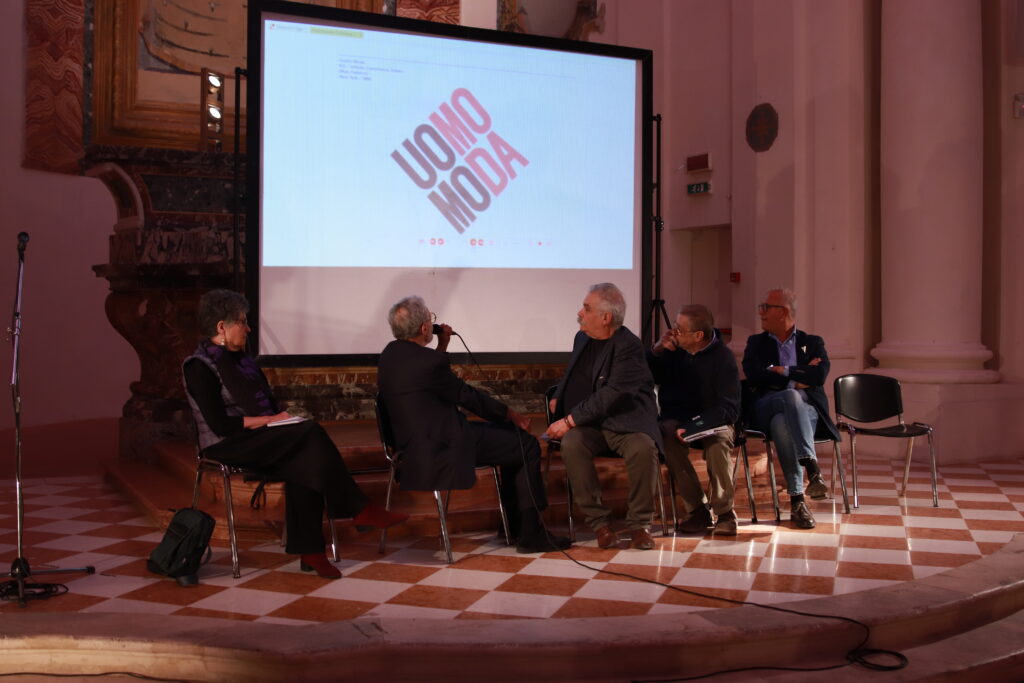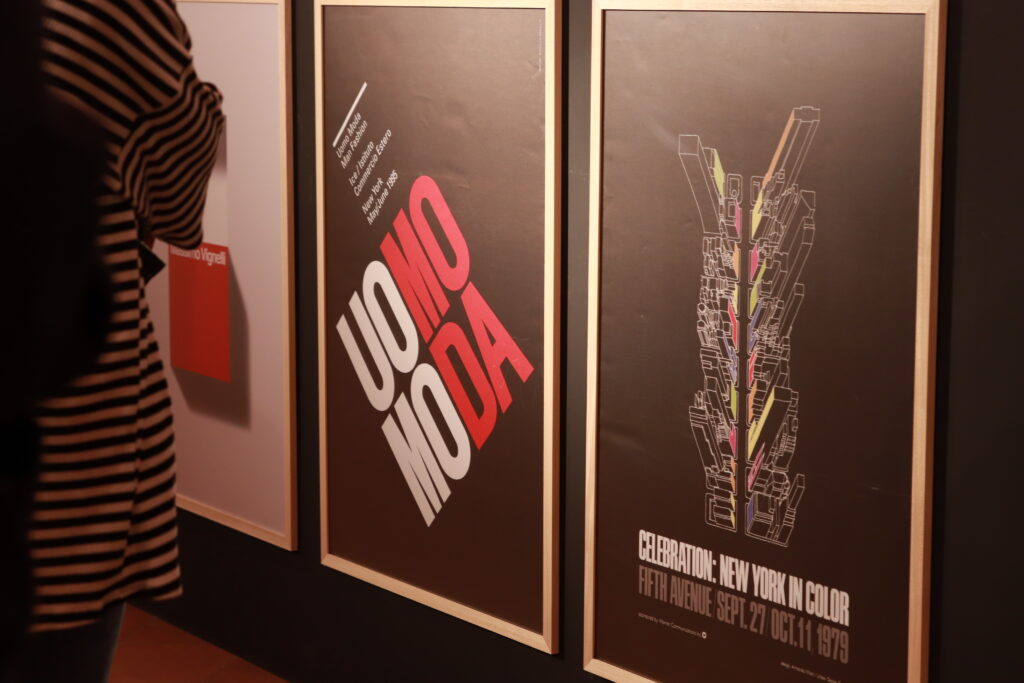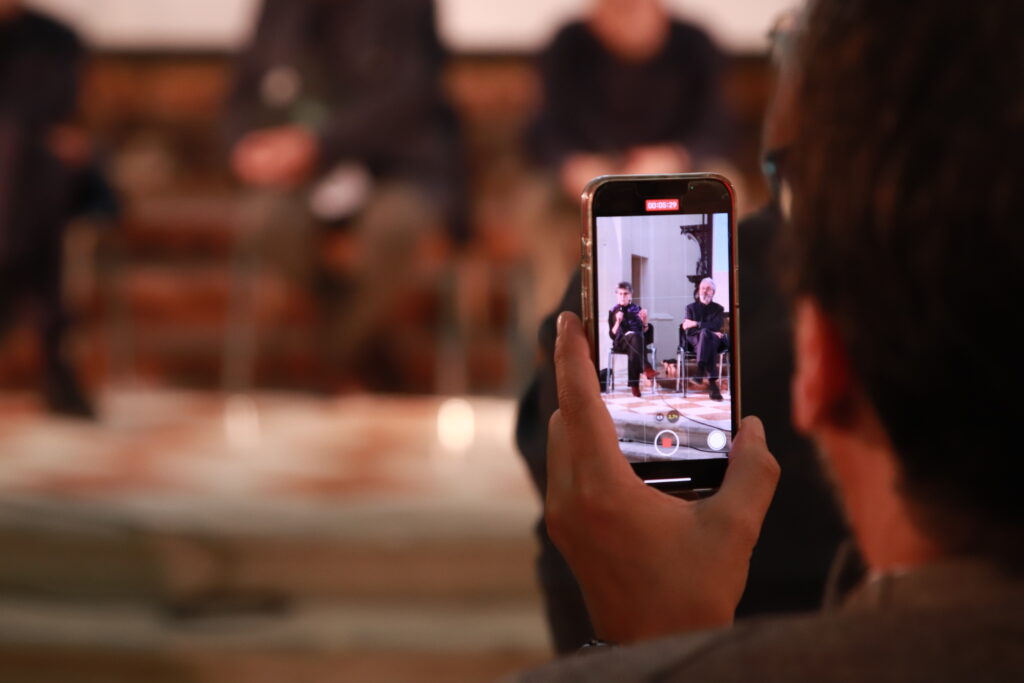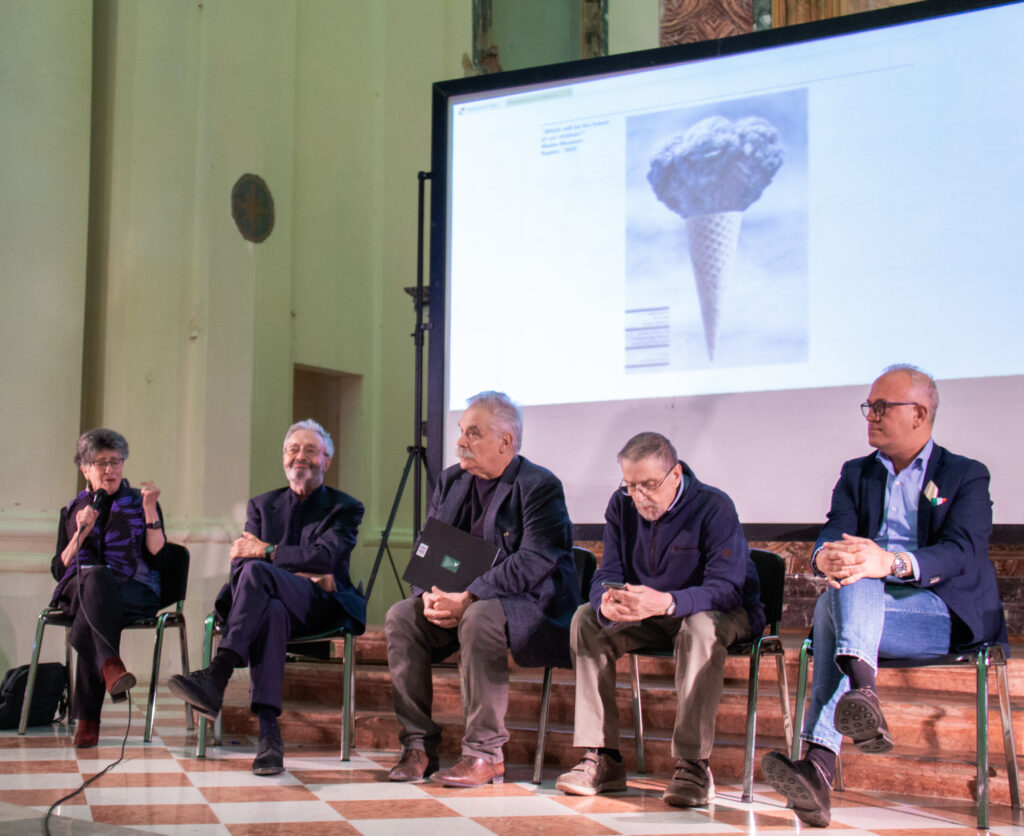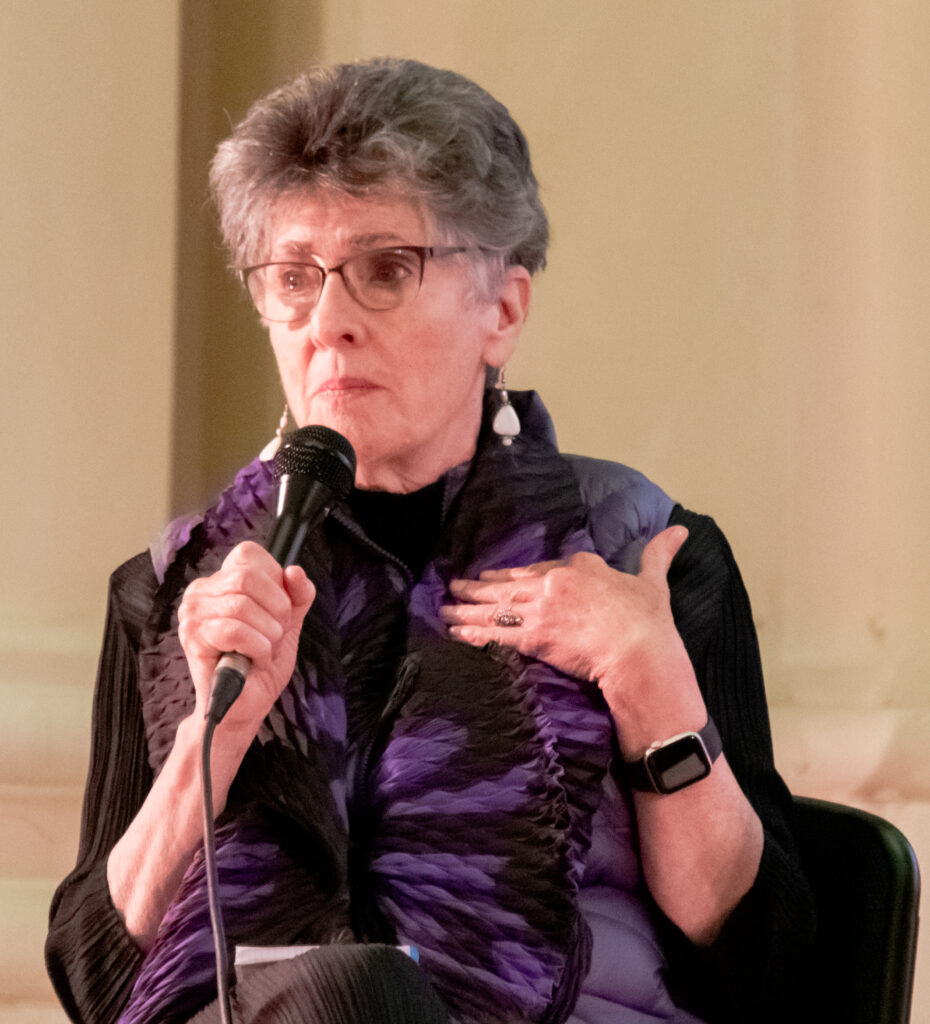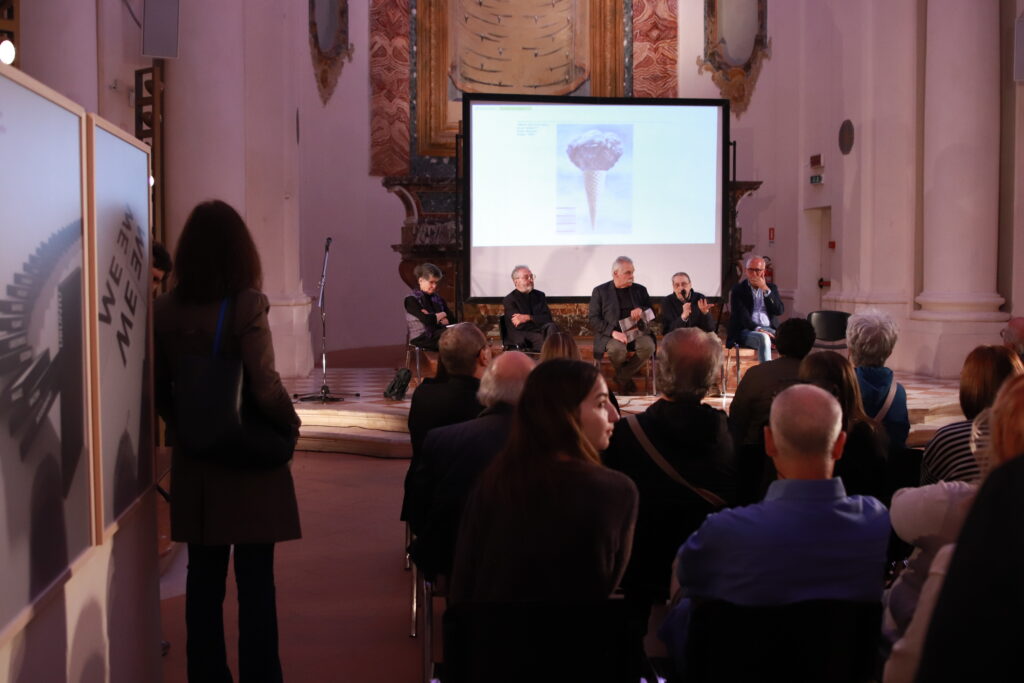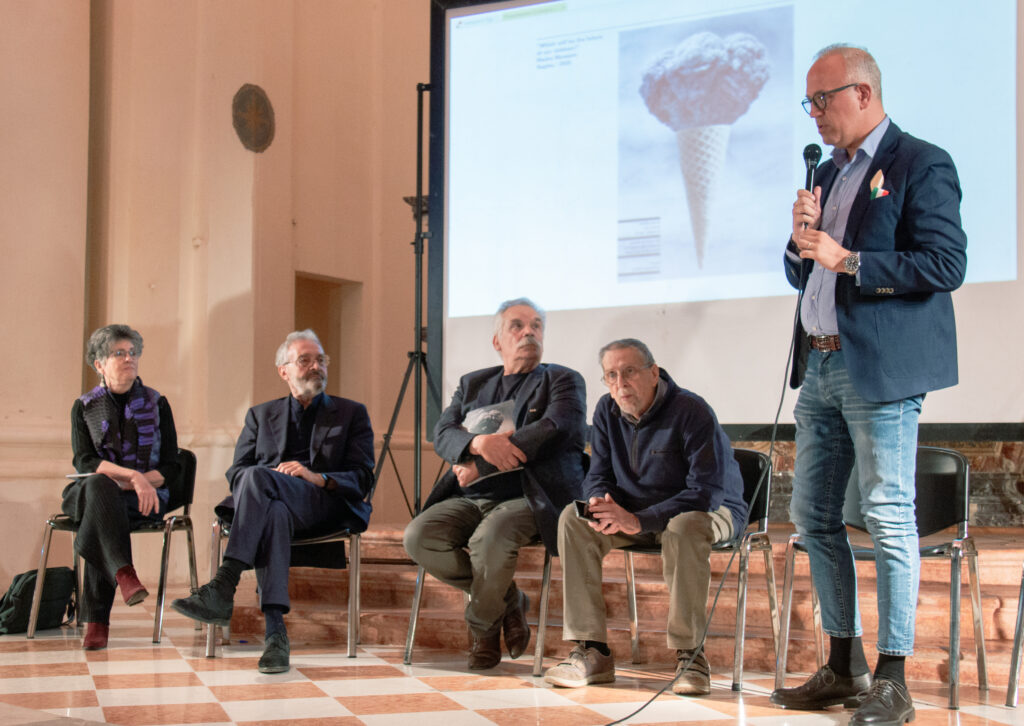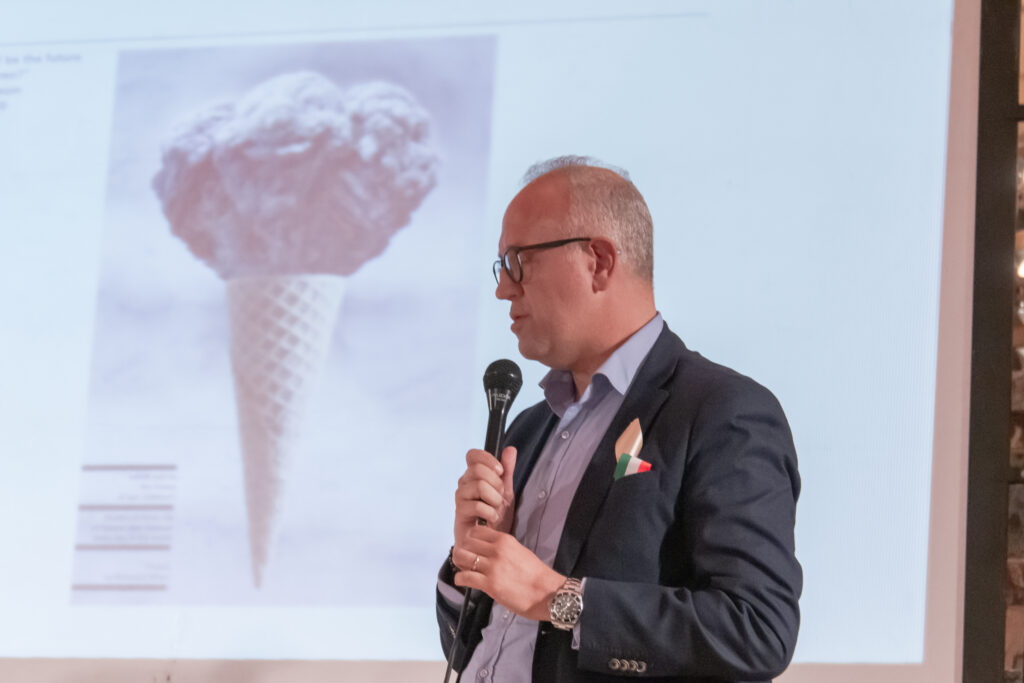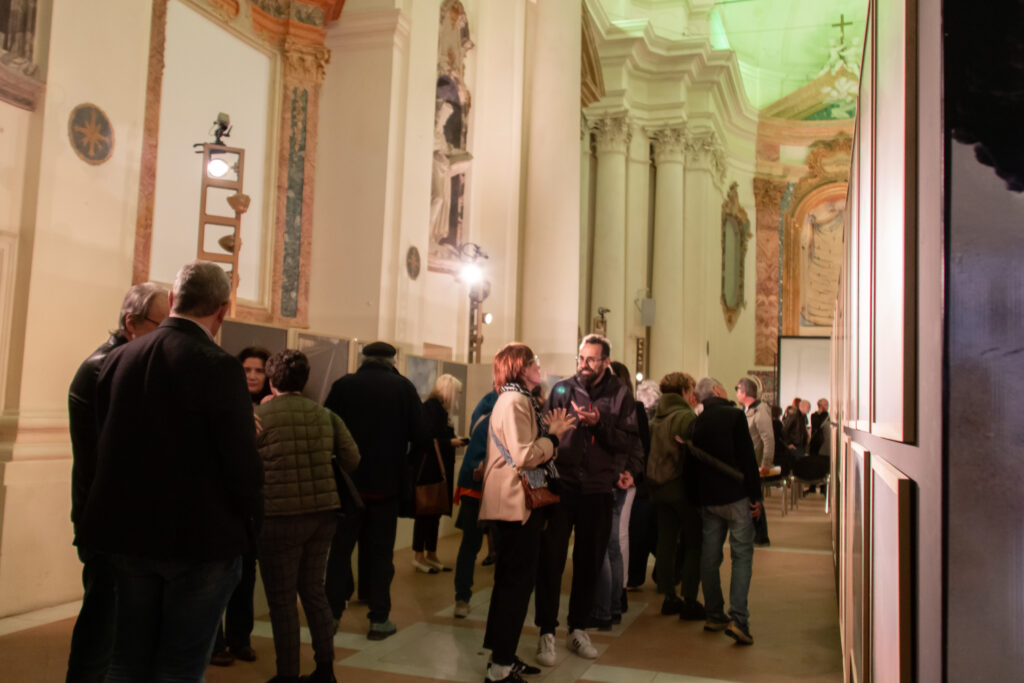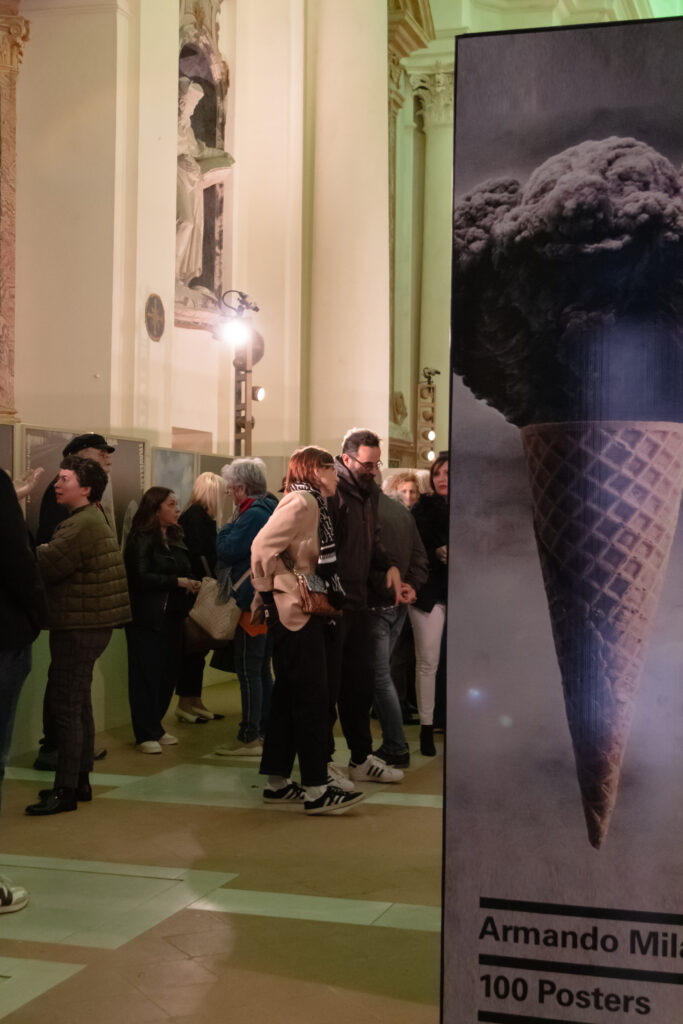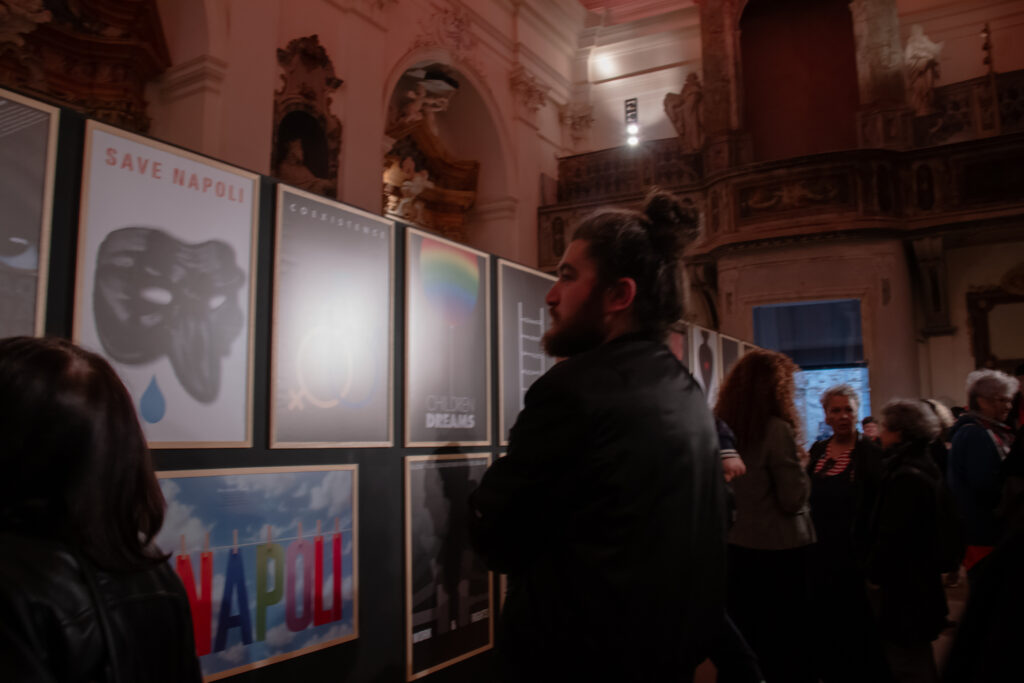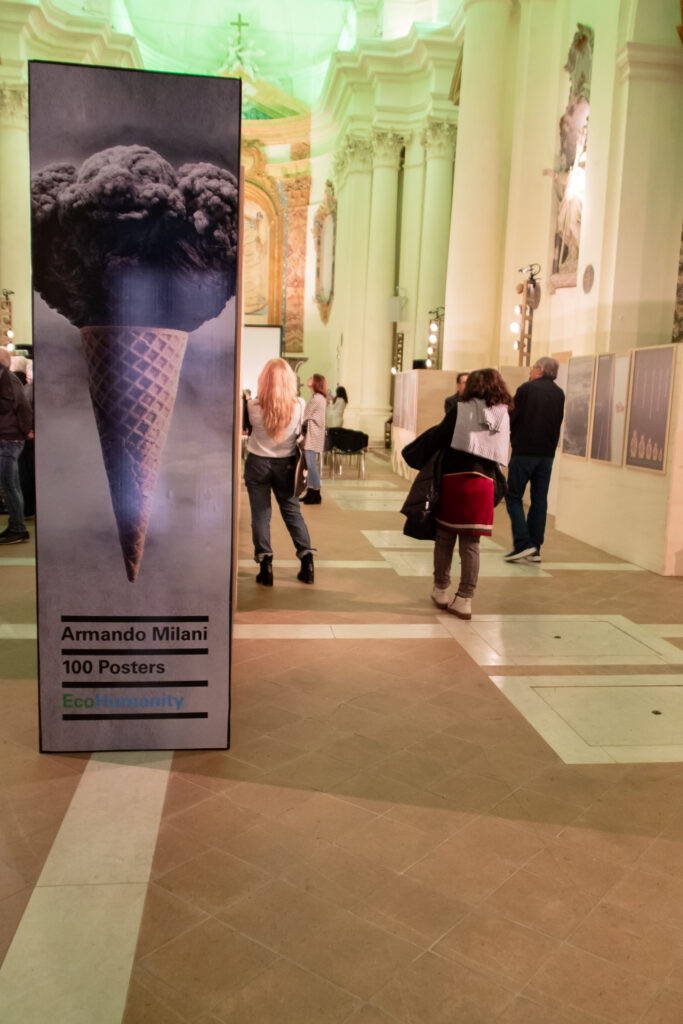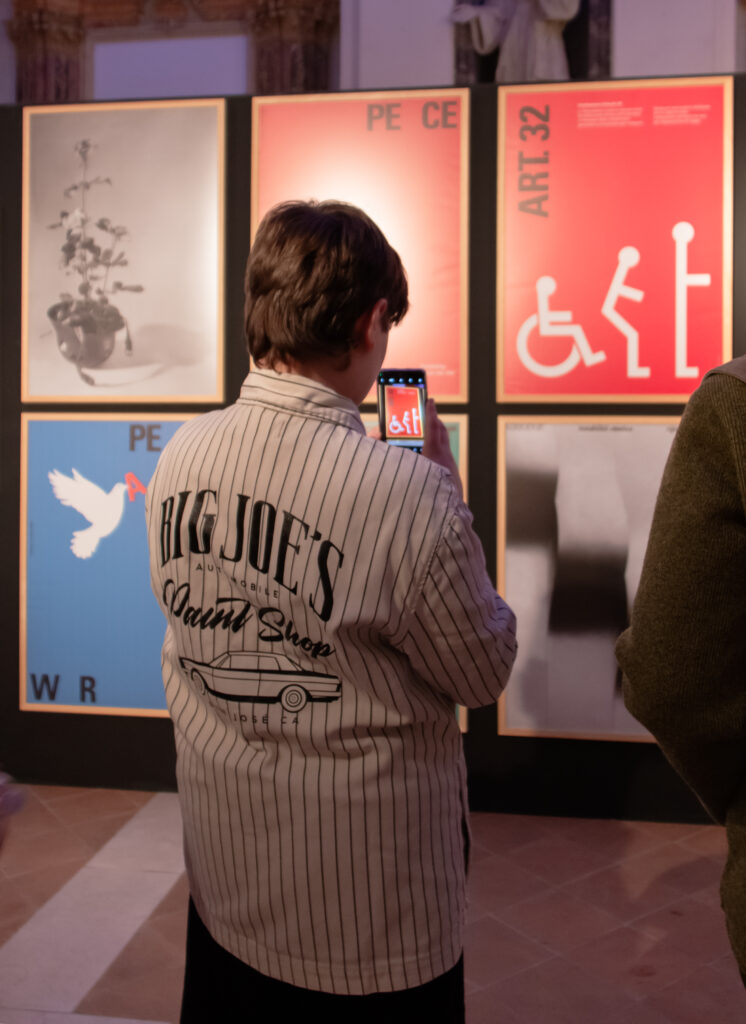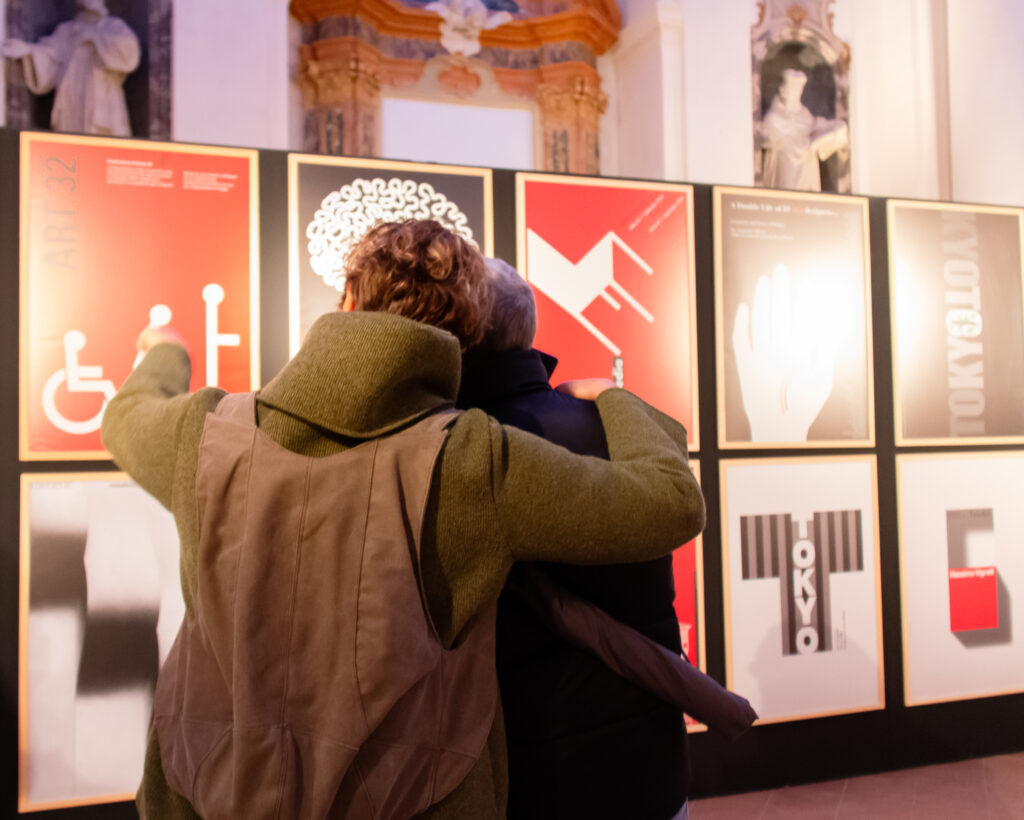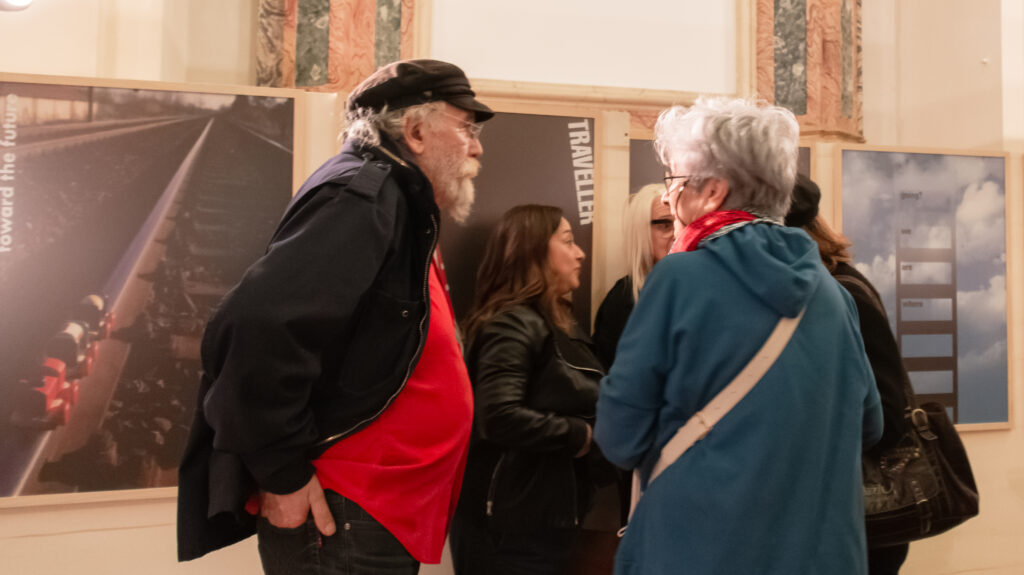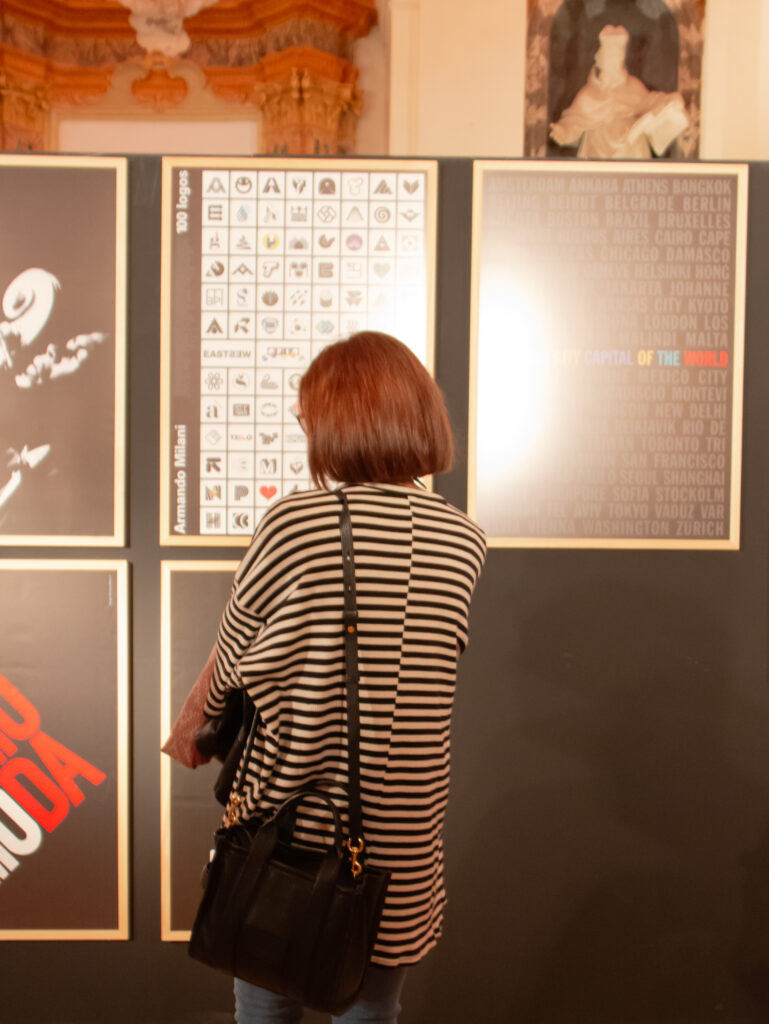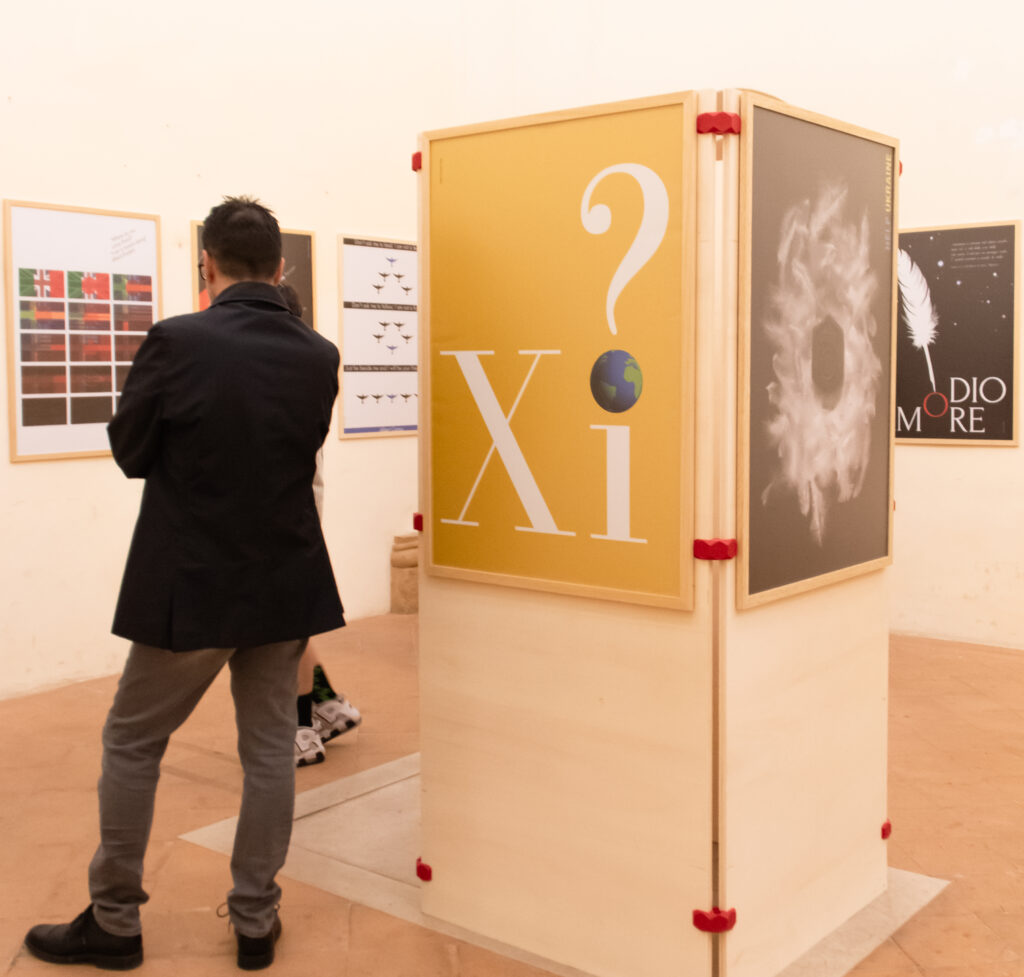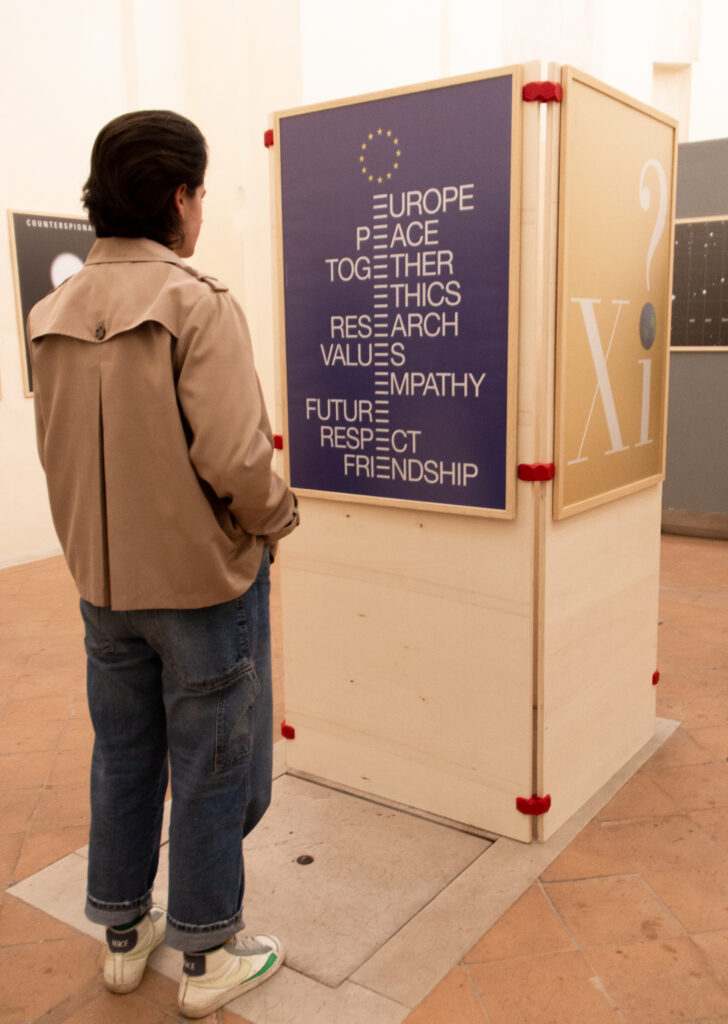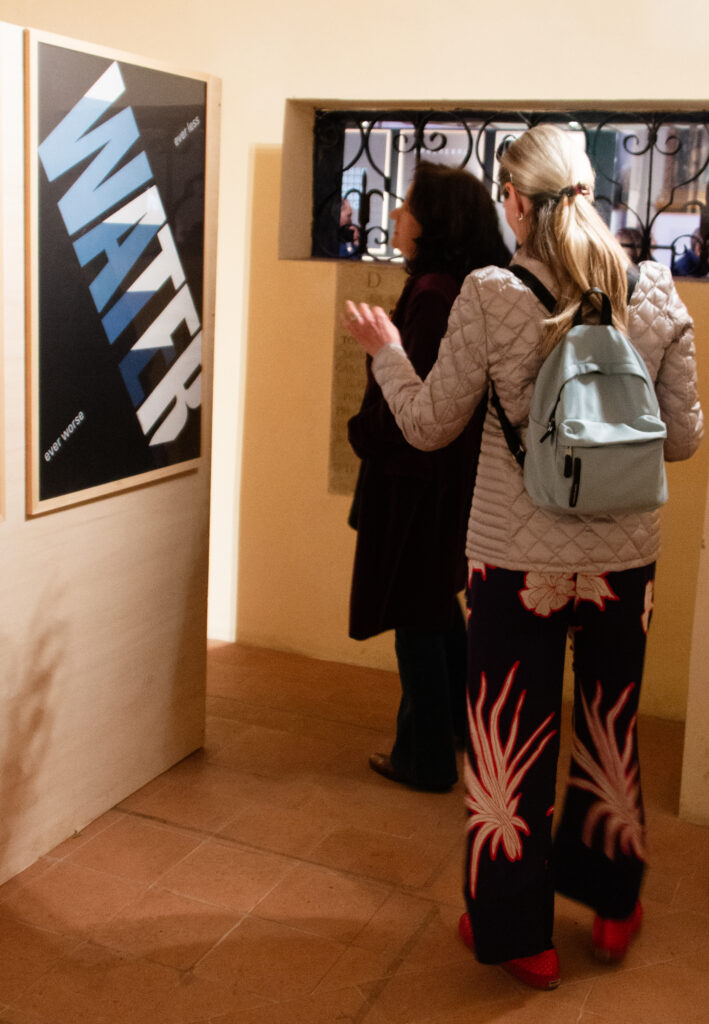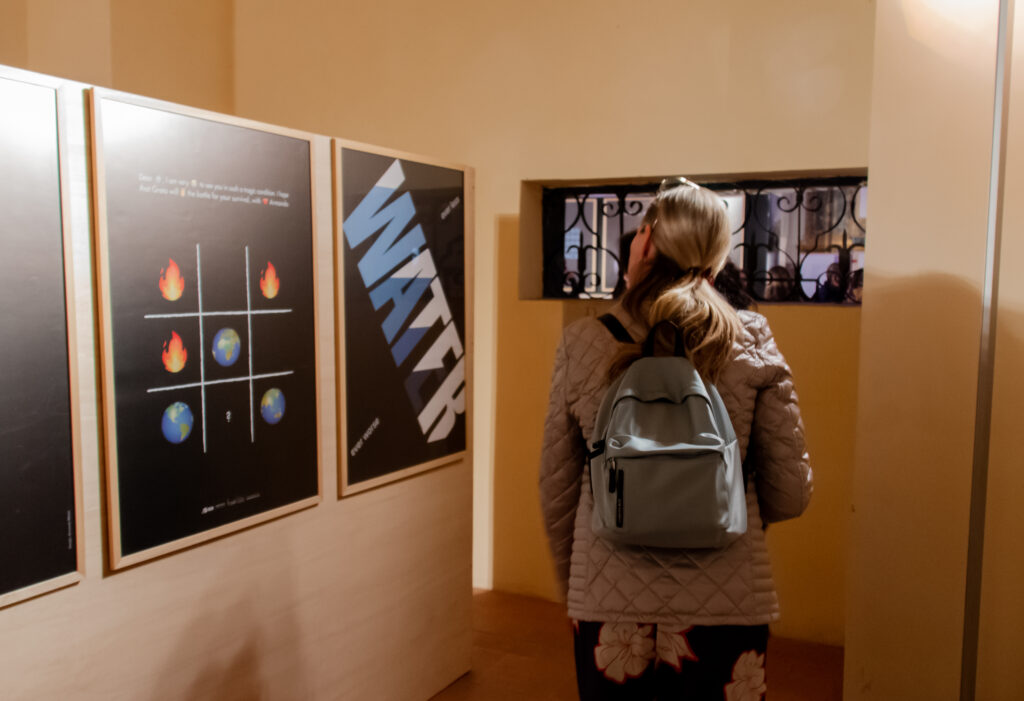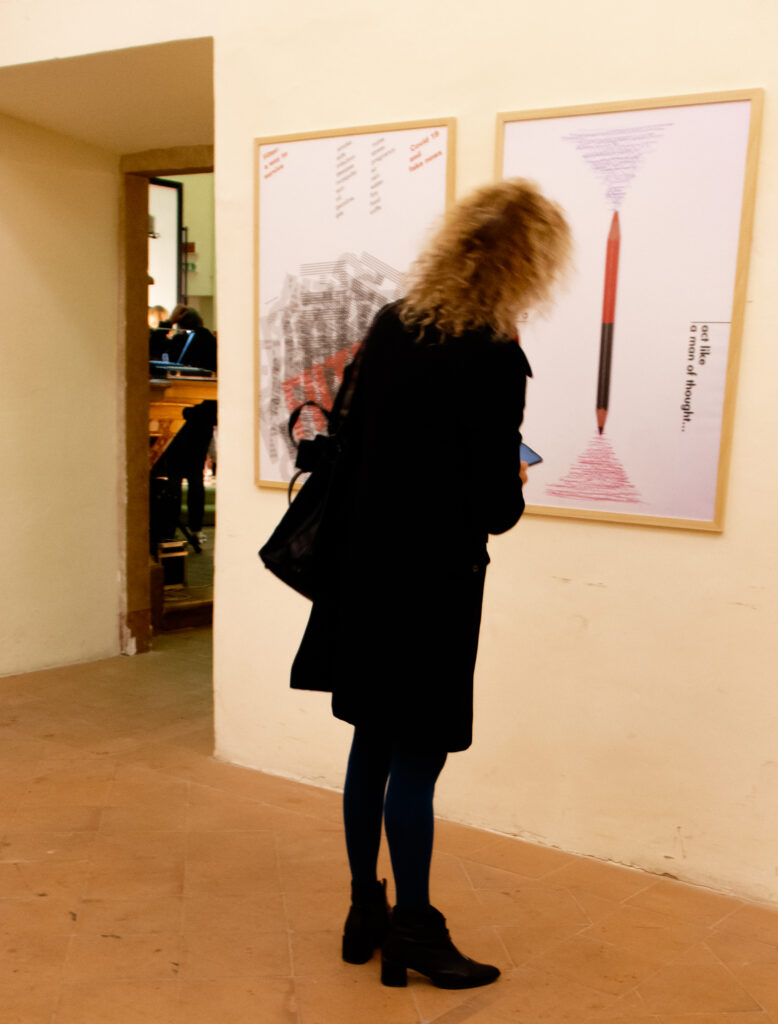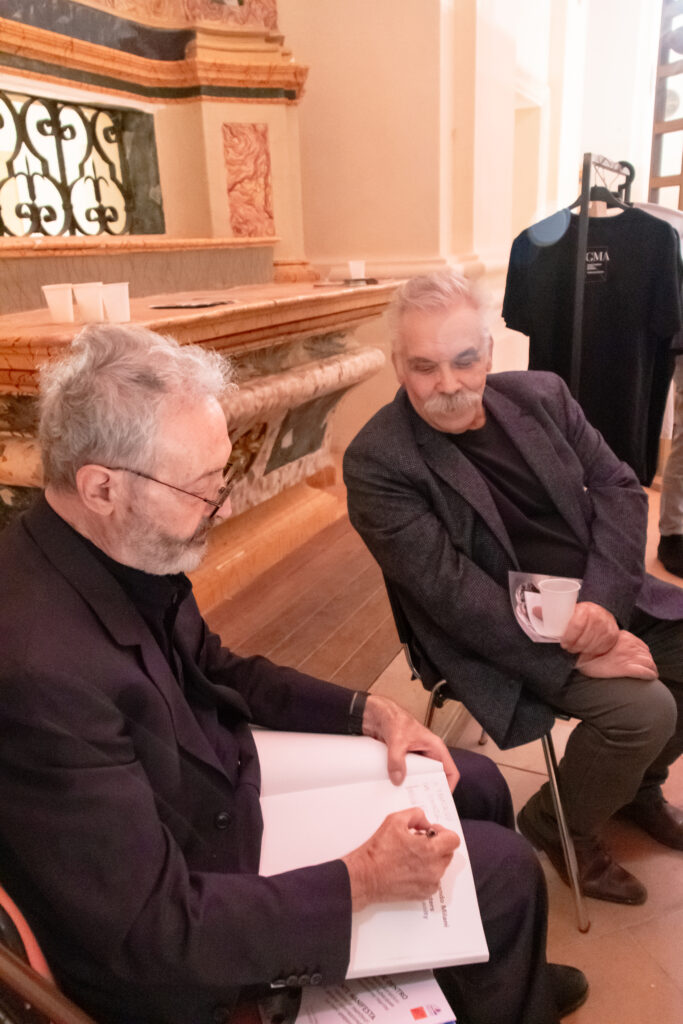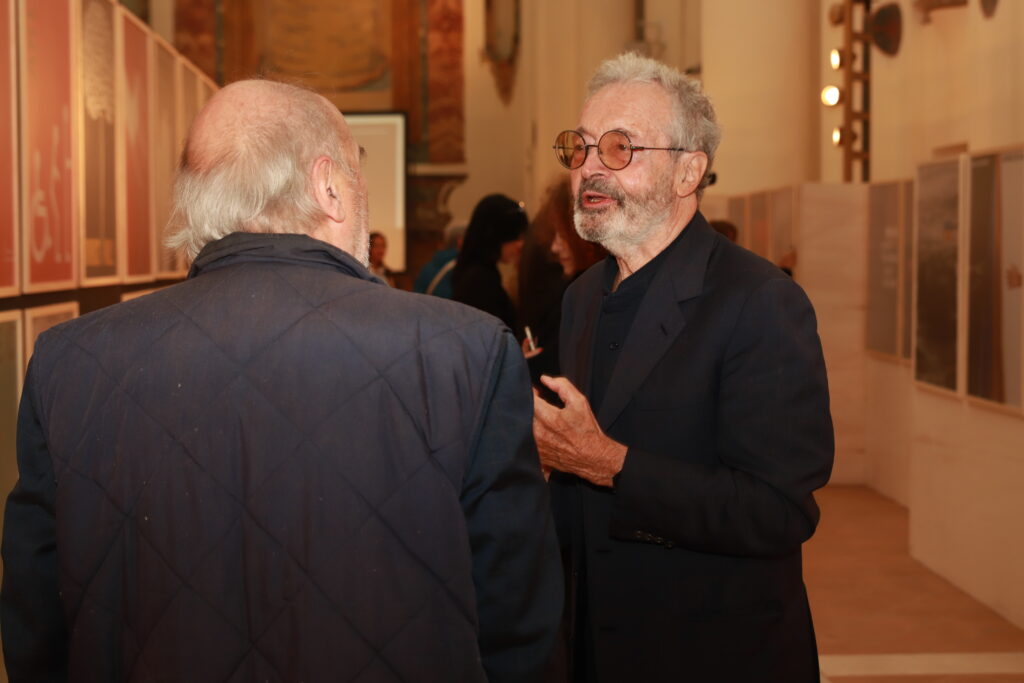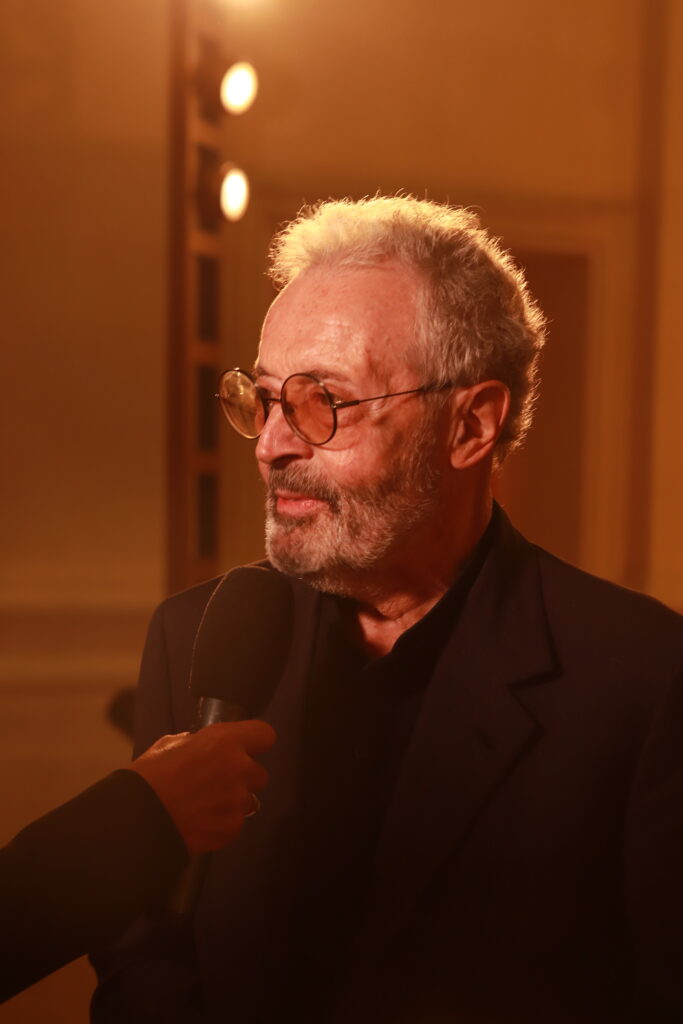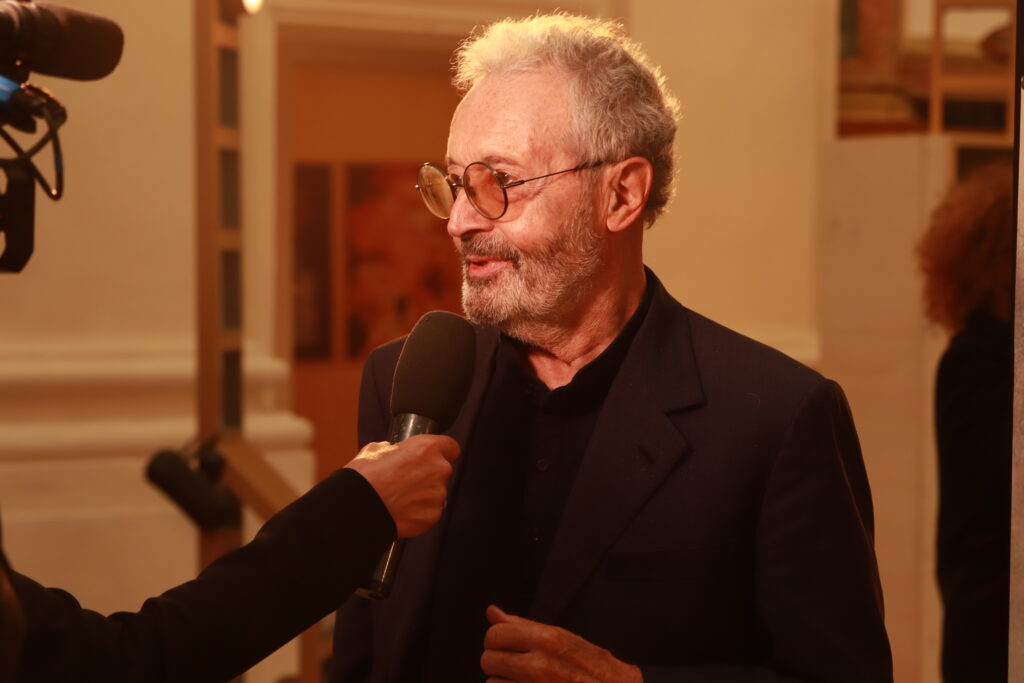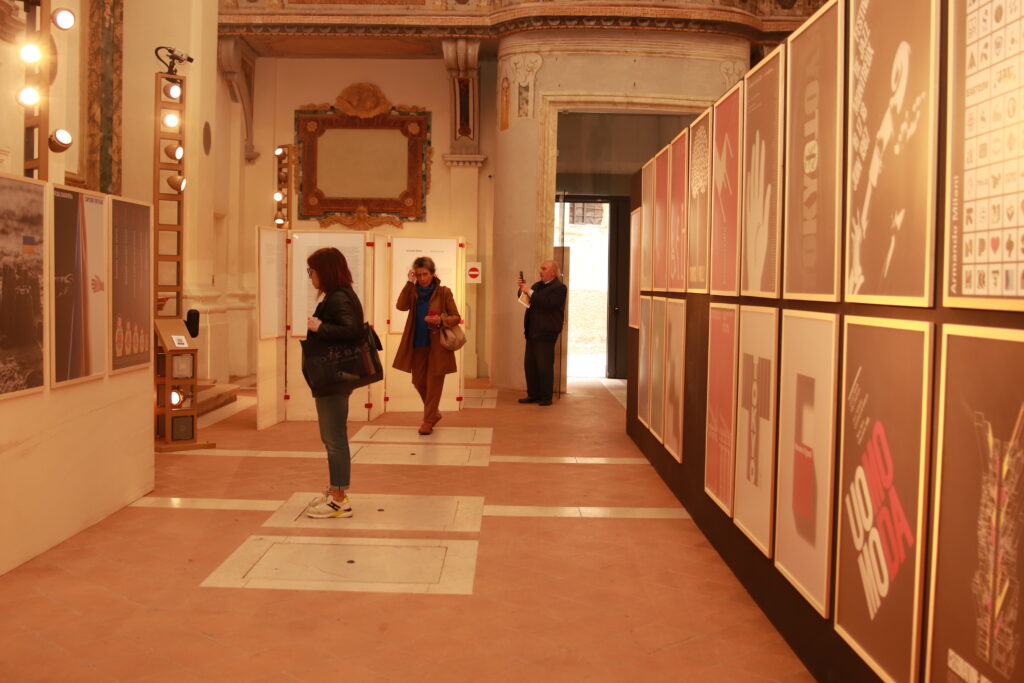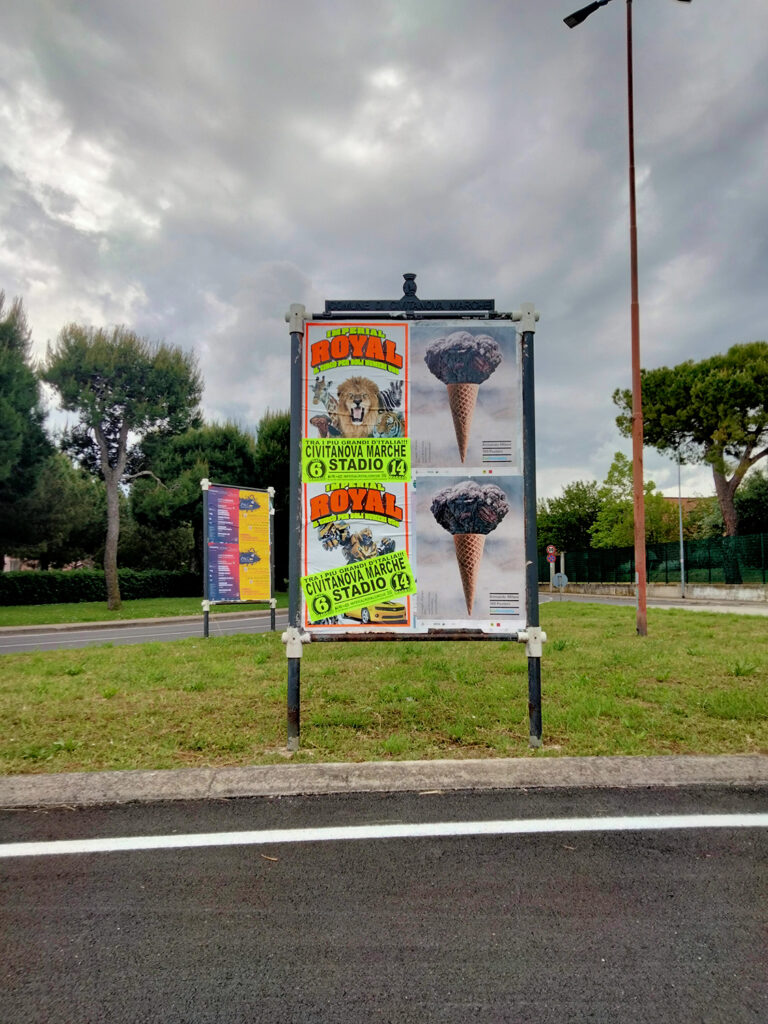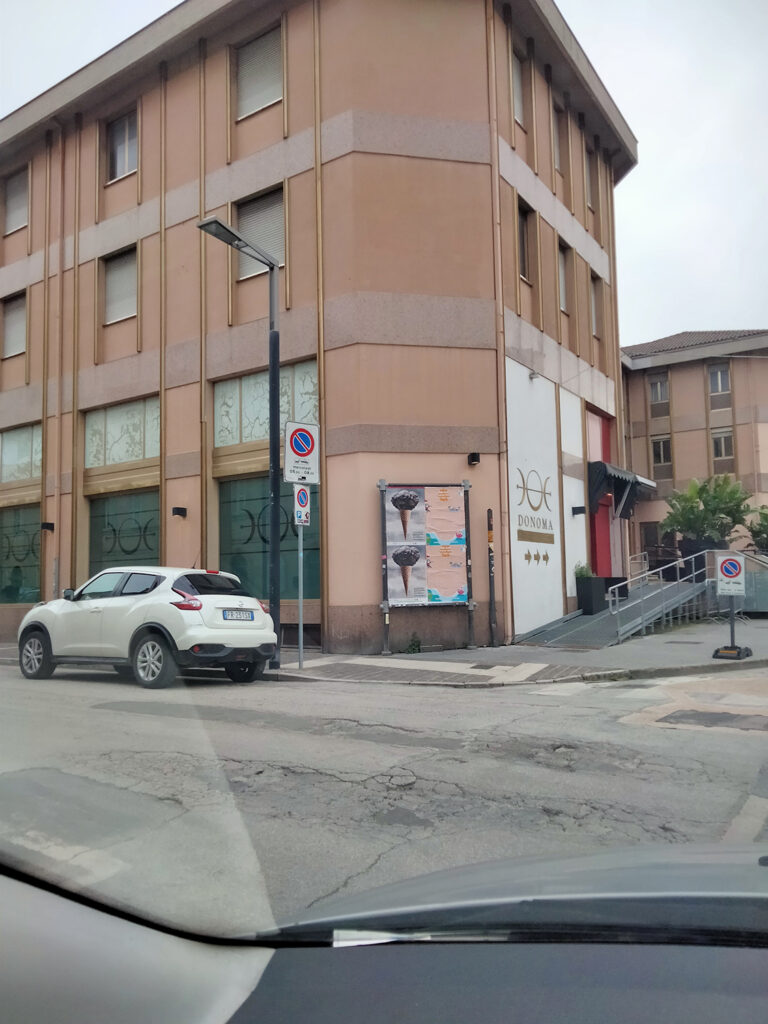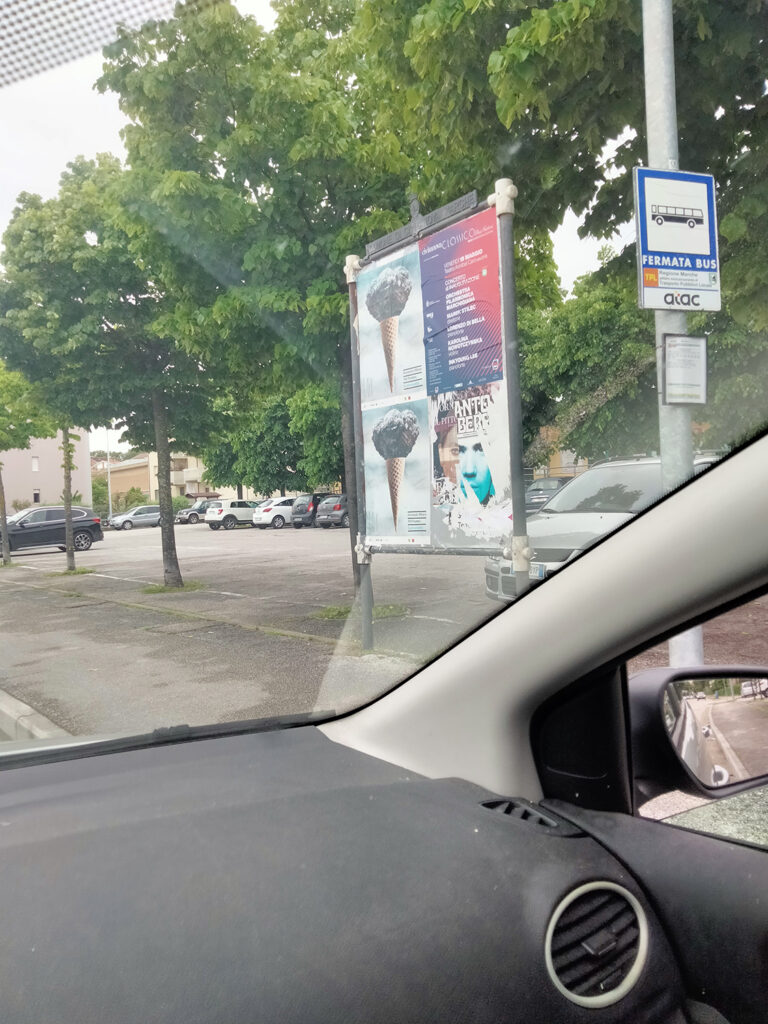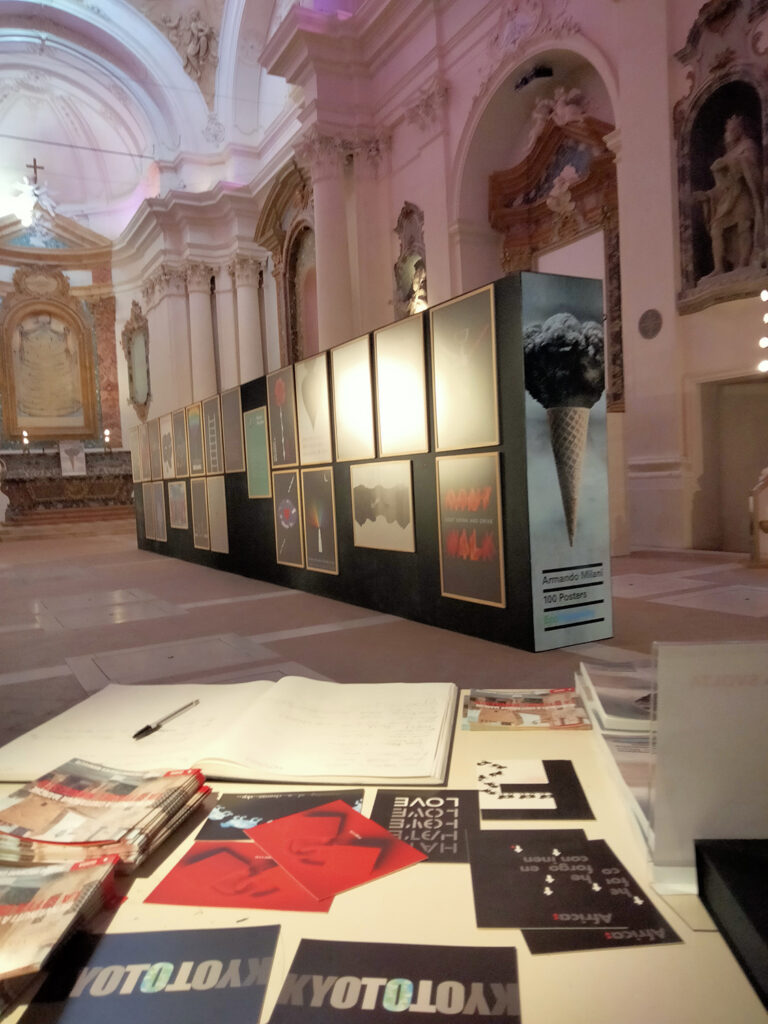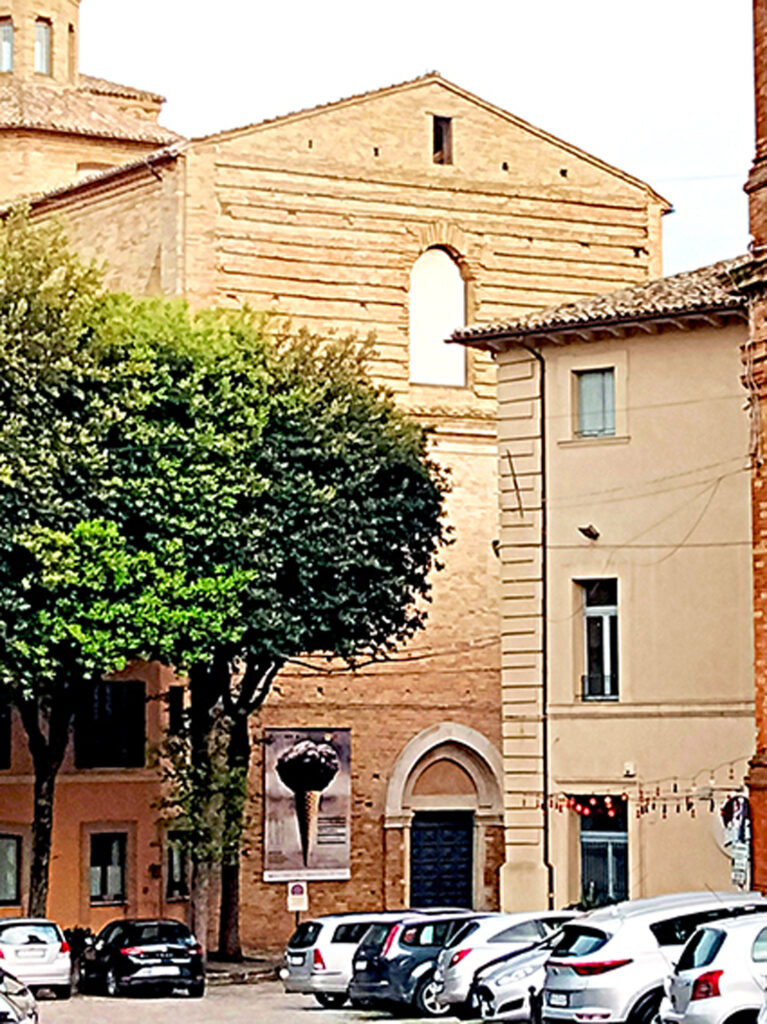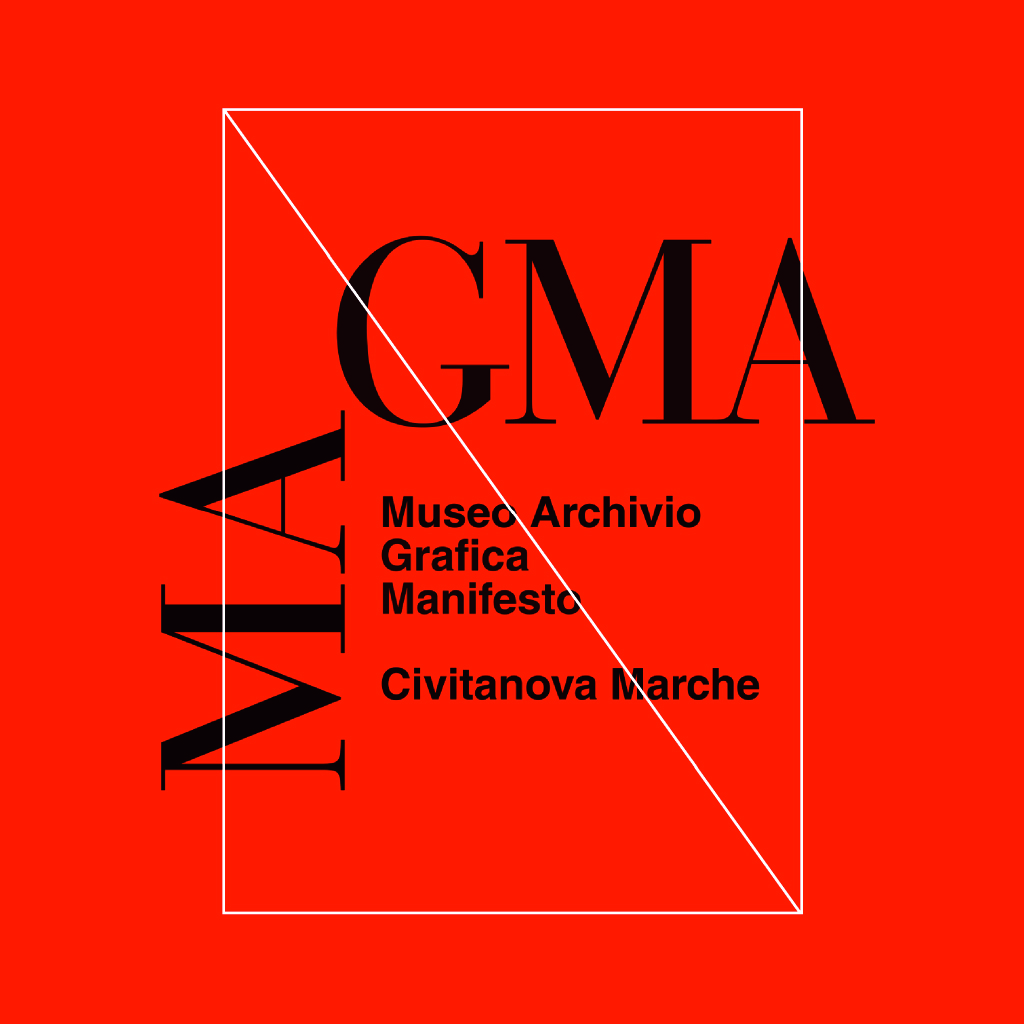
ARMANDO MILANI 100 poster – EcoHumanity / Armando Milani 100 poster – EcoHumanity
“Questa collezione di poster EcoHumanity documenta il mio lavoro di venti anni esatti a partire della colomba War Peace per le nazioni Unite a New York nel 2002, ora diffuso in tutto il mondo, per finire con il poster “European Future” per il Parlamento Europeo che è stato approvato nel febbraio 2022.
Ho dedicato la prima parte della mia mostra ad Albe Steiner, con cui ho studiato alla Scuola Umanitaria negli anni 60, perchè ho appreso da lui i valori dell’etica ed estetica da applicare nella nostra professione per migliorare la qualità della nostra vita.
Penso che noi designer abbiamo il dovere di diffondere messaggi di denuncia e di speranza. Non abbiamo il potere dei politici, ma abbiamo la possibilità di far riflettere la gente.
Ho diffuso poster di problemi per la pace, dialogo, libertà e tolleranza e ultimamente contro i disastri ecologici. Come vedrete, con le mie immagini essenziali cerco di sedurre l’occhio per raggiungere il cuore del lettore, un insegnamento del costruttivista russo El Lissitsky di cui ho fatto tesoro”.
Armando Milani.
“In effetti l’avventura della grafica di Milani è riassumibile in tre stagioni e in tre luoghi: Milano, New York e il Mondo. Tre luoghi fondamentali per capire come ha inteso un mestiere, il senso di una professione, ma anche le sue diverse facce. Il primo è il luogo della formazione. Il periodo americano, a New York, è la seconda grande stagione, la conferma e l’affermazione professionale in tutti i sensi. Poi si arriva a quella che dovrebbe essere la stagione dove amministrare gli allori e invece per Armando è la vera avventura della grafica. E il luogo non è più una città, è il Mondo. I suoi unici committenti sono l’umanità e il pianeta. Un compito molto serio, ma ricco di espressività forse il periodo più inventivo. Uno spazio totalmente liberato dal tema del lavoro, dalla necessità di esercitare un mestiere. Armando guarda il mondo e lo fa per comunicare messaggi di cui l’umanità ha bisogno. Quello che negli ultimi anni Armando sta realizzando è un lavoro di testimonianza, vuole comunicare e parlare non ai grafici, ma alle persone. È una sollecitazione costante, come se tutti i giorni i drammi della Terra bussassero alla sua porta, attirassero la sua attenzione mentre legge il giornale e chiedessero una riflessione profonda e una risposta visiva. Sono i grandi temi che ci coinvolgono, una impellenza da dover testimoniare con grande abilità e con un linguaggio che è fondamentalmente universale perché utilizza le immagini per comunicare e così superare le barriere, sciogliere le difficoltà delle lingue. Messaggi che troviamo in questa mostra, ma che hanno la genesi in quel pensiero visivo che dagli inizi, a Milano, ha praticato e perseguito: il progettare con la consapevolezza di dover figurare una sintesi. Ti mostra quello che non vedi e lo fa con un’immagine di straordinaria bellezza. Davvero la sua grafica è una “seconda lingua”, è un sapere organizzato, un processo, un sistema, ma soprattutto un modo di pensare e un dono per l’umanità. Come possiamo leccare con tranquillità un gelato spaventoso?”
Mario Piazza
by Magma Museum
“The EcoHumanity collection of posters covers my extraordinary career of the past two decades — from the ‘War/Peace’ Dove designed for the United Nations Organizations in New York in 2002, now spread all around the world, up to the ‘European Future’ poster, meant for the European Parliament and which was approved on February 2022.
The first part of my exhibition is dedicated to Albe Steiner, under whom I attended the Scuola Umanitaria in the 1960’s, and from whom I learnt the ethic and aesthetic values to apply to our profession in order to improve and enhance the quality of our life.
We, as designers, have the task to denounce, but also to spread a message of hope, as far as I am concerned. We don’t have the power politicians do, but we do have the chance to make people mull over.
I have recently spread posters on problems for civil peace, dialogue, freedom and tolerance, but even on environmental disasters.
As you will see, by means of my essential and minimalistic images I try to seduce the viewer’s eye, reaching his heart. A lesson I have learned from the Russian constructivist El Lissitsky, and that I have always cherished with me.
by Armando Milani
As a matter of fact, Milani’s graphic art adventure can be summarised in three seasons and three places: Milan, New York and The World. Three fundamental places that are important if we want to understand how he interpreted, used and conceived an art, the meaning of a profession, but also its various sides (aspects). The first is the place where he was educated. The American period in New York, is the second great stage. It is proof and complete professional success, from all the points of view. And then, you attain, you reach the target and reach the bottom, to that point that we often call the end of a career, the “season”, the time to organise the achievements but which for Armando is the very adventure of graphic art. And the location is not only the city alone but The World. His only buyers are mankind and the planet. A very serious and engaging task but expressivity rich at the same time, maybe the most prolific phase, full of inventions. It is an unchained, free space, completely independent of its meaning “work”, something different from the need to do a job, a given professionality. Armando observes the world and he does it to communicate messages humankind needs. What Armando has lately been doing and achieving is sort of witnessing and reporting, he wants to communicate and talk not to the graphic artists but to people. It is a continuous solicitation, a stimuli, as if the tragedies of the Earth were knocking on his door everyday and were drawing his attention, asking for a profound thinking and a visual and figurative reaction, when he is reading his newspaper. We are always involved by these major themes, an urgent beseech of nature that we need to notice and talk of with great ability and by means of a language that is fundamentally universal because it uses images to communicate and thus it can cross boundaries and it can simplify and overcome the difficulties that languages impose on us. They are messages we can find in this exhibition but which originate in that visual thinking that he first had practised and followed in the beginnings when still in Milan: projecting being aware of the fact that you must express a synthesis. He shows you something you can’t always notice and he does it in an extraordinarily beautiful image. It is here where actually the graphic art is a “second language” after all. It is an organised knowledge, a process, a system but most of all, a way of thinking and a gift for mankind. How can we tranquilly lick a frightening Ice-cream [I-scream]?
By Mario Piazza
